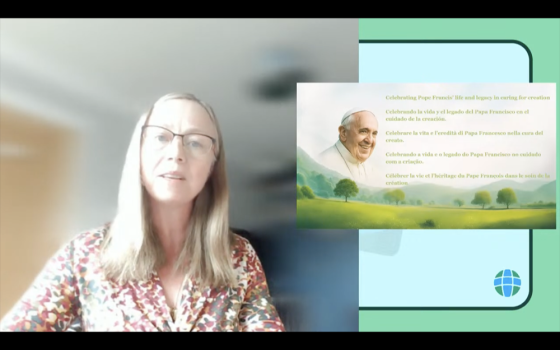I once asked a learned theologian to explain to me the essential difference between the theology of Karl Rahner and the theology we associate with the Communio school. My learned friend replied, “It takes on many different expressions, but fundamentally, Rahner considers the Incarnation as a theological category and the Communio school considers the Incarnation as an event.” I still try to get my unlearned theological mind around that sentence, but, at Christmas it begins to make sense to me and I discern why I like the Communio school so much.
The event of the Incarnation has generated great culture. Think of the great hymns we sing at Mass tonight and tomorrow. Can anyone be unmoved by a rousing rendition of “O Come All Ye Faithful” or “Hark the Herald Angels Sing”? Think of the beautiful crèche scenes, from the lowly ones in modest homes to the elaborate scene found in the narthex at Sts Cosmas and Damian in the Roman Forum. Think of the meals that have been handed down, refined, tweaked but only so much, from generation to generation, as means of marking this day off from all other days. How many of the greatest painters the world has ever known have reached the zenith of their craft when they turn their skill to paint a Madonna and Child?
In the book “Brideshead Revisited,” we come across this exchange between Charles and Sebastian when they first discuss Sebastian’s Catholic faith:
“I suppose they try and make you believe an awful lot of nonsense?’
“Is it nonsense? I wish it were. It sometimes sounds terribly sensible to me.”
“But, my dear Sebastian, you can’t seriously believe it all.”
“Can’t I?”
“I mean about Christmas and the star and the three kings and the ox and the ass.”
“Oh yes, I believe that. It’s a lovely idea.”
“But you can’t believe things because they’re a lovely idea.”
“But I do. That’s how I believe.”
That’s how I believe. A lovely idea, or song, or picture, or traditional meal, or liturgy, these things touch a different part of our humanity than does anything that would earn the designation of “proof.” They aid our belief. And, it is this capacity of our humanity, to believe through beauty, that is one of the distinguishing marks of our Catholic faith. Indeed, whether or not a Christian aesthetics was even possible, or if such a thing were dangerous, was one of the points at issue in the Reformation. Not for nothing did the Calvinists who first settled these parts ban any celebration of Christmas. The holiday, precisely because it commemorates an event, precisely because it generates culture, presented those early Calvinists with a challenge they thought it best to avoid.
A Jewish friend once said to me that he thought the special affinity we had both discovered in our lives between Jews and Catholics was rooted in this fact: Both of their religions produce kitsch, and that kitsch was a sign of a lively faith. Culture is not, and cannot be, all high-brow. There is plenty of Christmas art that is not exquisite, but it is still genuine, it is not vulgar. The kitsch and the high art both attest to something very profound, something that transcends our more reasoned approaches, something about the mystery we celebrate. We cannot get our heads round the idea of God becoming Man. And, so we let our hearts get round it.
I wish each and every one of you a blessed – and a beautiful – Christmas.



